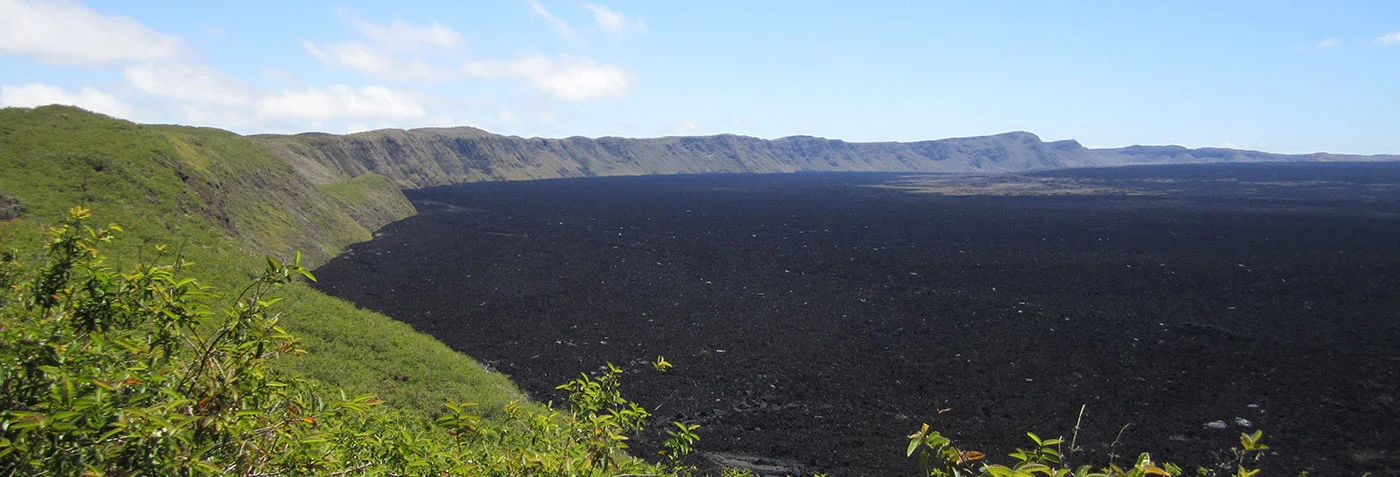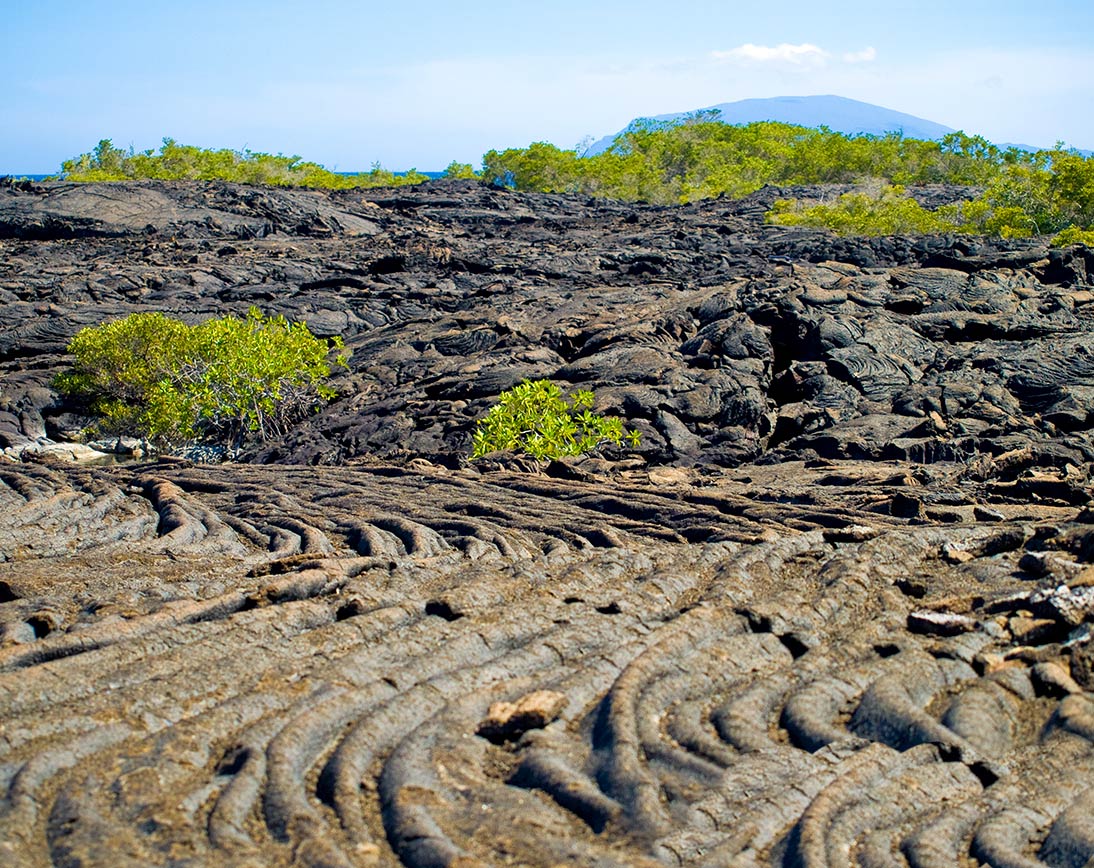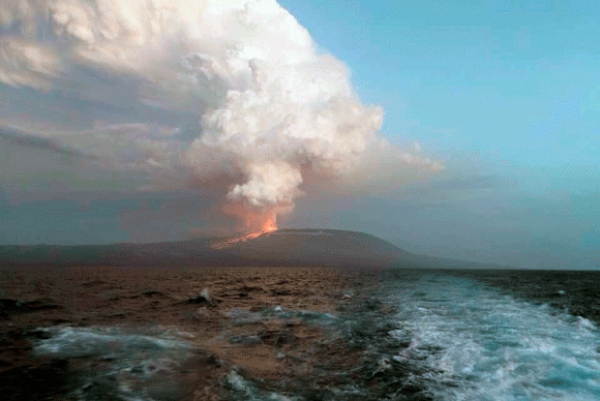
The new shield volcano eruption model is like a molten crepe on a skillet | Travel Blog
Some large shield volcanoes are found in the oceans. The lava flows slowly from the ground through long fissures and is not usually ejected in violent explosions. One of these fissures fed a curving pathway that was created by the recent eruption at the Sierra Negra volcano, Galapagos Islands. It is located just over a thousand km off South America in Pacific Ocean. The 15-kilometer-long pathway including the kink was formed by three forces in the subsurface. Timothy Davis and Eleonora Rivalta from the GFZ German Research Centre for Geosciences, Potsdam, and Marco Bagnardi from NASA's Jet Propulsion Laboratory, Pasadena now describe the process based on computer models.
Geoscientists in California noticed in radar satellite data, that the Sierra Negra volcano's flank had bulged to about two meters in height. This bulge was about five kilometers in width and stretches from the crater rim approximately ten kilometers west to the coast. With the aid of computer models, Timothy Davis and his colleagues discovered what this structure and its mysterious bend was all about.

Driving force 1: Hotspot below the Galapagos Islands
Like many other volcanoes located in the middle the oceans of the globe, the Galapagos Islands contain a "hotspot". Hot rock has slowly been rising from the Earth's interior for at least 20,000,000 years. It looks like a hard-to-form, but solid, plasticine. This hotspot is a blowtorch-like thing that melts through the Earth's solid crust. It can be up to 200 km wide. The magma around it is lighter than the rock, so it continues to rise until it reaches a large cavity two kilometers below the Sierra Negra volcano's crater. This magma chamber has a diameter of approximately six kilometers and a thickness no greater than one kilometer. Timothy Davis describes it.
Driving force 2: The weight and volume of the volcanic rock
Since the October 2005 eruption, magma has poured into the chamber from the bottom for almost 13 years. The pressure rose, lifting the crater floor to 5.20m. The enormous force of the magma mass gathering sought another route. Deep underground, viscous rock crawled slowly in a west-northwesterly direction. The magma flow, which is still forming, is also influenced by another force: the immense weight of the volcano’s rock masses press on the magma flow. The pressure inside the shield volcano decreases as it becomes flatter. When the molten rocks are pressed in the direction of lower pressure, they slowly expand in a magma stream that is only four kilometers in width but only two meters in height.

Driving Force 3 - Buoyancy
Near the coast, the flattening shield volcanic presses ever harder on the almost ten-kilometer-long magma conduit below the surface. A third force takes the lead. Magma is lighter than the surrounding rock and was previously prevented from swelling by the shield volcano. However, near the coast, the buoyancy is stronger than the pressure from the rock above. The magma slope tilts about ten degrees to the depths. These forces together change the direction of the pressing of viscous rock, and the magma slope curves to the north-northeast.
The volcano erupts , and the rock cracks
The magma under the crater continues its pressure increase until the upward-pressing, molten mass begins cracking the rock around this magma passage. This magma-filled crack (dyke), traveling deep underground to the coast is moving at a snail's pace. Timothy Davis describes the course of the volcanic eruption.

Prerequisite for prediction and hazard minimization
The geophysicist was the first to be able simulate the tortuous magma transport pathway that feeds an eruption, and the forces that control it. Together with colleagues from California, Timothy Davis and Eleonora Rivalta have laid the foundations for future research on fissure eruptions. They have made a significant step in predicting eruptions and reducing their danger.
Check out more information on Earth Sciences and Geology: https://phys.org/
Check Our Galapagos Cruises:

